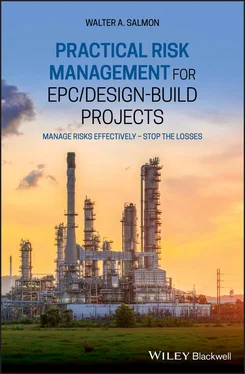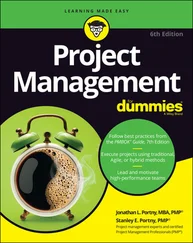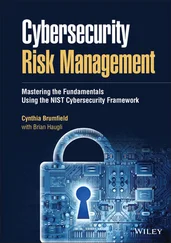1 ...6 7 8 10 11 12 ...19 Another area where the Employer is more vulnerable under the Traditional Contracting Approach is with regard to Variations, since the Contractor will be looking for reimbursement for all the extra costs involved. These extras often arise because the Contractor is very often appointed before the Design Team has fully completed the Detailed Design work; the extras creep in as the shortcomings in the design work are uncovered. By contrast, under the EPC and Design-Build approaches, once the Front-End Engineering Design has been fixed, the Contractor will thereafter be deemed to have allowed in its bid pricing for everything necessary to complete the Project. Any changes brought about due to the development of the Detailed Design by the Contractor will all be at the Contractor's expense and not be reimbursed by the Employer.
As mentioned in Section 2.2.4, one vital point about the overall relative time-frame taken to complete a Project under the Traditional Contracting arrangement needs to be remembered. This is that the time taken to compete the design work generally has to be added to the construction time to obtain the overall time-frame for handover of the Project from its conception. By contrast, under an EPC/Design-Build arrangement, a large portion of the design work can usually be undertaken while the procurement and early construction activities are ongoing. In theory at least, this means that, under both the EPC approach and the Design-Build approach, a saving can be achieved in the overall time taken to get to the point of handing over the completed Project to the Employer compared with adopting the Traditional Contracting approach.
2.3 Design-Build Approach
For those construction Projects where architectural merit may not be so important, an alternative method of implementation to following the Traditional Contracting route is the Design-Build approach. Under this approach, a Contractor is selected to both design and build the facility (including selecting and appointing all the Subcontractors). This is usually conducted under the watchful eye of an Employer's representative (who may or may not be an Architect or Design Engineer). Whether or not the Contractor is given a Conceptual Design to follow will depend to a great extent on the type of facility involved, and whether or not the façade needs to be given special attention. For example, if the Employer requires a standard cold storage building to be erected quickly, then it would generally be adequate for a specialist Contractor to propose the layout and elevational details. On the other hand, if an upmarket apartment block is required, the Employer will inevitably be much more fussy about both the internal and external layout of the property, as well as its external looks, especially if the apartments are required to be sold as quickly as possible after their completion. If the latter situation is the case, then the Employer may well appoint an Architect to take care of such sensitive details, with the Detailed Design work being left to the Contractor to do.
The Design-Build approach has the benefit for the Employer that the responsibility for the functionality of the completed facility is not generally split between a Design Team and the Contractor, nor is the Employer responsible for the appointment and performance of Subcontractors. This ‘one-stop shop’ approach would not be achievable if the Detailed Design work were to be given to a third party to undertake (such as to a specialist designer not linked to the Contractor). The same would be true if the construction work were to be broken up between different Contractors (such as for the civil work, the buildings work or the mechanical and electrical work elements). It would also not be achievable if the procurement work were to be undertaken by the Employer (or by a third party on behalf of the Employer), since the responsibility for any materials, goods, and equipment that arrived late or failed to perform as required would not be the Contractor's responsibility. However, similar to the Traditional Contracting approach, under the Design-Build approach the Employer will usually shoulder the financial risks of such things as unexpected poor soil quality, bad weather delaying the Contractor, etc. Such risk adoption by the Employer helps to keep the bid prices down, since the Employer only has to pay extra to the Contractor if the risks actually materialise and become problems.
Since, generally speaking, the design work is not complicated for Design-Build developments, there is usually a much shortened design period compared with the Traditional Contracting route, especially if the facility is of the specialist type and the Contractor itself is the design specialist. For this reason, there is also usually no need for third-party design consultants to approve the design before the Contractor orders materials, goods and equipment, or starts the foundations work. Added to this, as already mentioned above, completion of the design work can run in parallel with the procurement and early construction activities. As the Construction Industry Institute's recent research has validated, 2 this therefore means that the time-frame for completing a facility is generally far quicker (and often cheaper) under the Design-Build arrangement than it is for the Traditional Contracting approach (where Architects and Engineers are required to complete all the design work before the Contractor selection process can begin).
The above is simply an overview of what the Design-Build approach comprises, whereas it is in fact a complex topic with a great variety of options as to who the contracting parties may be, where Architects and Engineers may play a bigger role, the different ways bidding can be conducted etc., none of which is the purpose of this book. A good starting point for those wishing to explore the concept of the Design-Build approach further is the appropriate Wikipedia article, since it contains a large number of very useful references for further reading. 3
2.4 EPC Approach
2.4.1 EPC Project Suitability
Although the Design-Build approach can work well with simple Projects, it may not be an entirely suitable procurement route if the proposed facility is complex (with, say, a great deal of emphasis on specialised industrial engineering inputs and proprietary equipment). This is even more true if the final product must also comply with a vast amount of stringent safety regulations and environmental obligations, as well as operational and performance requirements, before being put into use. Where the Employer requires the Contractor to guarantee the quantity and quality of outputs from the completed facility in the operational phase (usually because the Contractor is required to be the entity responsible for selecting, procuring and installing the process equipment), the contractual situation becomes even more complex. Examples of such complex construction work are oil and gas pipelines, oil refineries, petrochemical plants, etc., many of which fall into the mega Project bracket (i.e. over US$1 billion).
For dealing more effectively with such complex Projects, many Employers nowadays consider it best to put as much of the risks of Project success as possible squarely on the shoulders of the Contractor, well beyond the level of risks that would usually be acceptable to a Design-Build Contractor. This is where the Engineering, Procurement, and Construction (EPC) approach comes into its own. It is far better suited for this more complex type of technical/contractual scenario from the Employer's standpoint, especially where most of the risks are to be transferred to the Contractor. The EPC arrangement also usually avoids the need for the Employer to get involved in all the many complicated interfaces and associated coordination activities that occur between the design phase, the procurement phase and the construction phase. Those interfaces can often become an unwieldy task and an awful burden (especially where utility service providers are involved). It should be noted that use of the EPC approach is not limited to complex engineering work or facilities where proprietary technology is involved. In fact, the EPC approach has also been successfully applied to many different types of construction work, including large-scale developments such as upmarket holiday resorts (often including the full fitting-out requirements, usually under what is known as a ‘turnkey’ arrangement).
Читать дальше












